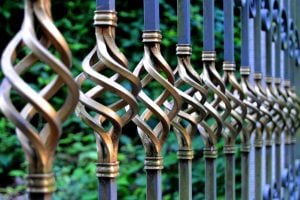
Metal finishing is a major step in manufacturing with metals. The finishing is a way of changing the metal’s surface to improve its structural durability and aesthetic qualities. Take a look at the different kinds of finishing and see what they can do for you.
Brushed Metal
This type of metal is brushed with a fine abrasive to provide a satin-looking finish. This does have a harmful effect on corrosion resistance, so it’s mainly used for aesthetic purposes.
Buff Polishing
Polishing metal allows it to have a reflective surface, which can have some practical applications. It is primarily used for aesthetics, but the smooth face of the metal means it will be more sanitary.
Hot Blackening
This method changes the surface of the metal into magnetite by coating it in a hot bath of materials like nitrates or sulfur salts. This turns the surface to a dark color that absorbs light and protects the metal from corrosion.
Metal Grinding
Grinding removes extra bits of metal from a metal surface. It can make the surface very smooth and is used for finishing metals that will be handled by bare hands.
Metal Plating
Metal plating means coating the surface of the metal with another type of metal, such as gold or tin. This allows the metal to be more malleable on the surface, as well as conduct electricity when it may not otherwise.
Powder Coating
This method applies a layer of powder to the face of the metal, then cured with high heat to create a corrosion-resistant coating. This process helps the metal keep its durability for a long time, and can have aesthetic purposes. The powder coating can have different colors, which will last longer than typical paint.
Sand Blasting
Sand blasting uses high pressure and abrasives to smooth a surface or remove existing corrosion. It keeps the durable qualities of the metal intact when removing existing corrosion. This method of finishing is often used on surfaces besides metal.

